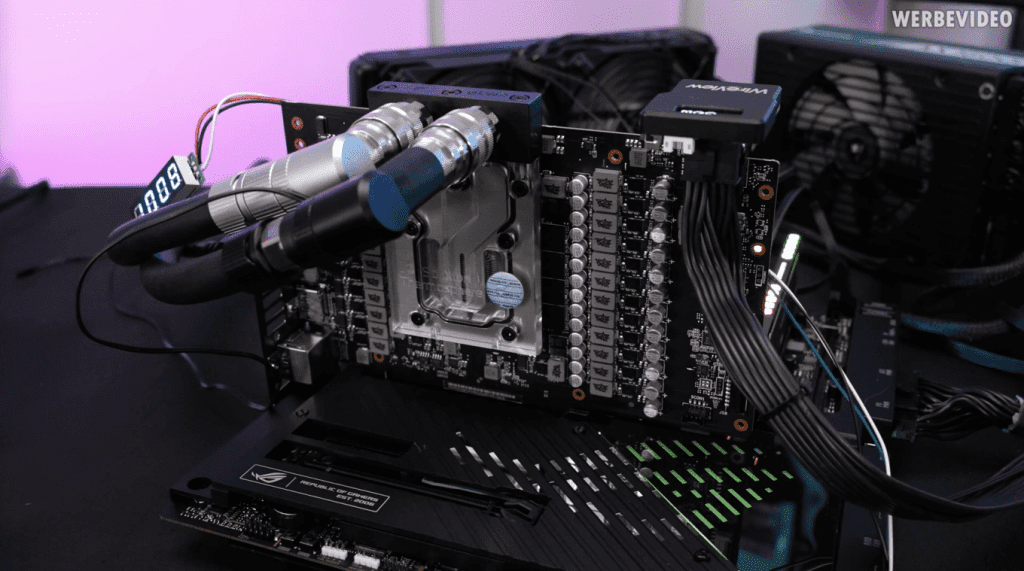450 watts, 600 watts, efficiency, anything else that makes sense – these are many questions when it comes to GeForce RTX 4090 consumption. In our GeForce RTX 4090 Founders Edition launch article we have in As part of TDP . measurement tests Show that more than 450W is not actually useful for this card. The card is already at the voltage limit at 400 to 450 watts.
in one of der8auer already showed the first videos of overclocking the GeForce RTX 4090That using a higher power limit only makes sense if you can increase the voltage. For this purpose, the tool was used to access the I2C bus in order to directly manipulate the voltage controller. A slight increase in voltage led to an increase in power consumption by 100 watts and more. Thus, it turns out that NVIDIA has already explored the reasonable limit, although this is already set too high, and the 450+ watt power limit could make sense if you could also bundle proper cooling.
Roman has now received an Exteme OC BIOS for the ASUS ROG Strix GeForce RTX 4090 24GB OC Edition that was already in use. This allows a maximum power of 1,000 watts, but also disables all temperature-based protection mechanisms. With such a BIOS, it is quite possible to destroy the GPU, which is usually not possible easily or with a normal BIOS.
With the default BIOS, the ASUS ROG Strix GeForce RTX 4090 24GB OC Edition can increase the power limit by 20% to 600W. After flashing the Exteme OC BIOS, the power limit can no longer be changed, but it should be a maximum of 1,000 Watts. As long as the cooler or cooler of sufficient dimensions is still in the GPU, no damage can occur.
As a result, Roman supplied the card with an old GPU water cooler – he didn’t have a full cover water cooler for the card yet. Then the voltage compensation was adjusted step by step. Since the cooler covers only the graphics processing unit (GPU) and memory chips, VRM temperatures must be considered.
Cooling becomes the limiting factor at this point. The card’s power consumption was 760 watts, and the GPU temperatures reached a limit of 70 ° C, so that the increase in voltage could no longer be used to increase the clock. Simply more effective cooling should be used here. It was already planned to cool this card with liquid nitrogen, but the model seems to have a flaw, because the PCI Express interface uses only eight lanes instead of sixteen. Of course, this has some impacts on performance, especially in extreme overclocking, as every percentage point counts here.
In the next step, the problems with the card should now be checked, then it can move on to more overclocking attempts.
YouTube Privacy Notice
At this point, we would like to show you a YouTube video. However, protecting your data is important to us: by including and running YouTube, it sets cookies on your computer with which you may be tracked. If you want to allow it, just click the play button. Then the video is downloaded and then played.
Your Hardwareluxx Team
View Youtube videos directly from now on

“Social media evangelist. Baconaholic. Devoted reader. Twitter scholar. Avid coffee trailblazer.”







More Stories
These brands are most vulnerable to phishing scams
Apple Maps Now Has a Web Version and Wants to Challenge Google Maps
Best AirDrop Alternatives for Android